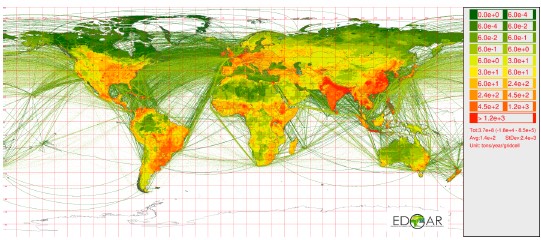File : D4.1
Author : Rona Thompson (NILU)
Statistical (CAPRI and EDGAR) and process-based (ECOSSE) models play an important role in estimating anthropogenic emissions of the non-CO2 GHGs. In particular, the IPCC Tier 1 method for estimating a number of important sources of CH4 and N2O are subject to very large errors. This is where, Tier 2 methods, using detailed emission factors for specific regions and technologies, and Tier 3 methods, using process-based models, are very important for accurate estimates of these GHG emissions.
This deliverable provides estimates of the anthropogenic CH4 and N2O emissions using two statistical models, and one process-based model for N2O only. The statistical model CAPRI estimates agricultural emissions and uses regional agricultural data, which is further disaggregated to high spatial resolution using auxiliary data (see section 2.1). The statistical model EDGAR was used to estimate the non-agricultural emissions (although it can also be used to estimate agricultural emissions) and uses international statistical data to estimate emissions at national level globally in a consistent manner. The annual national emissions are disaggregated to monthly resolution using country and sector-specific emission profiles, and are then further disaggregated to 0.1°×0.1° resolution making use of sector specific spatial proxies (see section 2.2). The process-based model ECOSSE estimates soil emissions of N2O and uses some statistical information, such as N-input data, as well as climate data. Emissions of N2O are parameterized based on mechanisms of N2O production via nitrification and denitrification pathways and are given at 0.25°×0.25° resolution (see section 2.3).

Figure 1 : Total CH4 emissions in 2015
